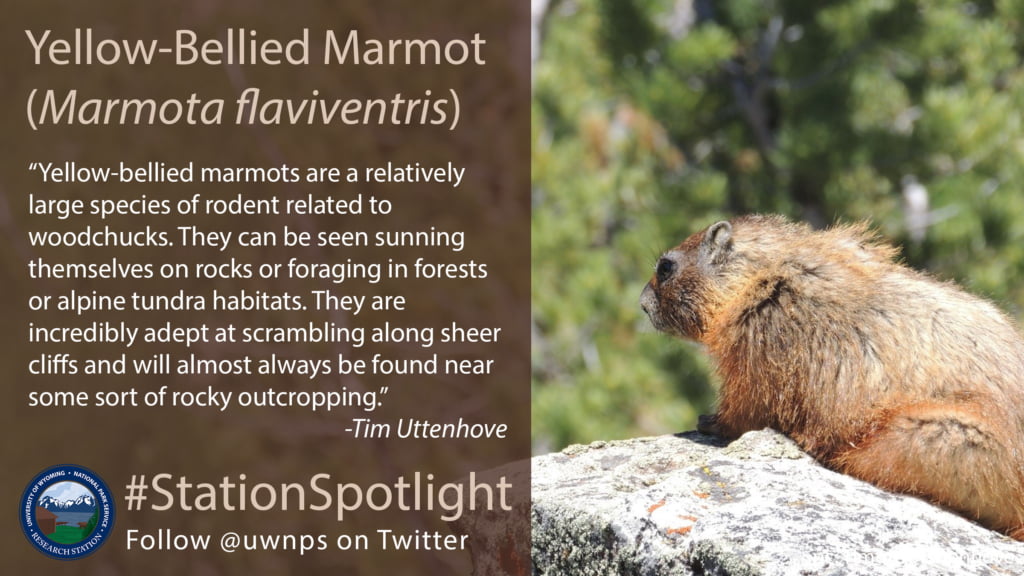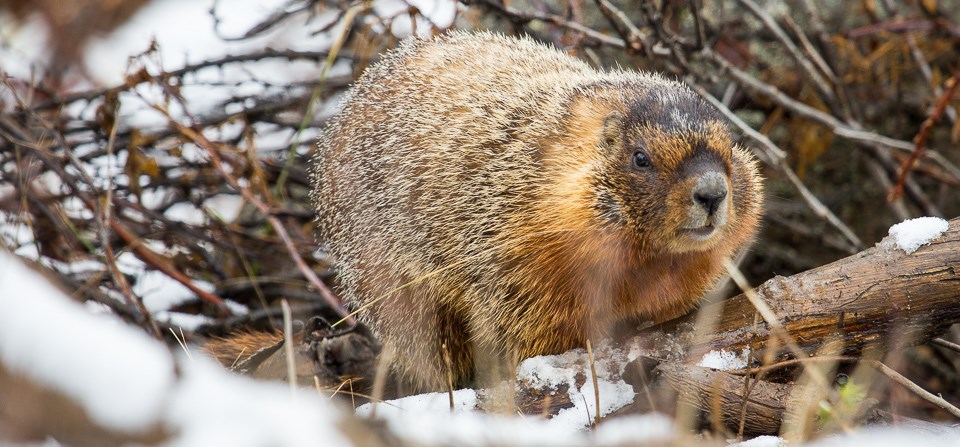Understanding the Marmot Yellow Bellied
A. Brief overview of the marmot yellow bellied species
The marmot yellow-bellied (Marmota flaviventris) is a species of ground squirrel native to North America, particularly found in mountainous regions across the western United States and Canada. These rodents are characterized by their yellowish underbelly, which gives them their distinctive name.
B. Importance of the marmot yellow-bellied in its ecosystem
The marmot yellow-bellied plays a crucial role in its ecosystem as a keystone species. Its foraging activities help to maintain vegetation structure and control plant growth, which in turn affects the abundance and distribution of other species within the ecosystem. Additionally, they serve as prey for various predators, contributing to the trophic dynamics of their habitat.
C. Purpose of the article
The purpose of this article is to provide a comprehensive understanding of the marmot yellow-bellied species, including its taxonomy, behavior, ecology, conservation status, and interactions with humans. By exploring various aspects of this species, the article aims to highlight its significance in the natural world and the importance of conserving its populations.
Taxonomy and Distribution
A. Taxonomic classification of the marmot yellow-bellied
The marmot yellow-bellied (Marmota flaviventris) belongs to the kingdom Animalia, phylum Chordata, class Mammalia, order Rodentia, family Sciuridae, and genus Marmota. Within the genus Marmota, it is classified under the species Flaviventris.
B. Geographic distribution and habitat preferences
Marmot yellow-bellied species are primarily found in North America, inhabiting mountainous regions across the western United States and Canada. They are commonly spotted in alpine meadows, rocky slopes, and forested areas, preferring habitats with sufficient vegetation cover for foraging and shelter. Their distribution ranges from high elevations in the Rocky Mountains to lower elevations in the Great Basin region. These marmots are well-adapted to various climatic conditions, but they typically avoid extremely arid or densely forested areas.
Physical Characteristics
A. Size and weight
Marmot yellow-bellied species typically exhibit variations in size and weight depending on factors such as age, sex, and geographic location. On average, adults measure between 16 to 24 inches (40 to 60 centimeters) in length, with their tails adding 6 to 10 inches (15 to 25 centimeters). They weigh anywhere from 3 to 11 pounds (1.4 to 5 kilograms), with males generally being larger and heavier than females.
B. Fur coloration and patterns
The fur of the marmot yellow-bellied is characterized by a blend of colors that provide camouflage in their mountainous habitats. Their fur is primarily brownish-gray on the upper parts of their body, with lighter shades on their underside, including their distinctive yellowish or buff-colored belly. Some individuals may have variations in fur coloration, with darker or lighter patches present.
C. Unique physical features
One of the notable physical features of the marmot yellow-bellied is its robust build, with a stocky body and short legs adapted for digging and burrowing. They have strong claws on their front limbs, which they use for excavating burrows and foraging for food. Additionally, marmots are known for their sharp incisors, which they use for gnawing on vegetation and other materials. Their ears are relatively small and rounded, and their eyes are positioned laterally on their head, providing them with a wide field of vision to detect potential predators.
Behavior and Ecology
A. Social structure and group dynamics
Marmot yellow-bellied species are highly social animals, typically living in colonies or “towns” comprised of several individuals. Within these colonies, they exhibit a complex social structure with established hierarchies. Dominance hierarchies are often based on age, size, and social interactions, with older and larger individuals typically holding higher ranks within the group. Marmots communicate through a variety of vocalizations and body language, which helps maintain social cohesion and coordinate activities within the colony.
B. Feeding habits and diet preferences
Marmot yellow-bellied species are primarily herbivorous, with a diet consisting mainly of grasses, herbs, leaves, flowers, and occasionally, fruits and seeds. They are selective feeders, preferring tender and nutritious plant parts, especially during the summer months when vegetation is abundant. Marmots spend a significant amount of time foraging for food, often venturing out from their burrows during the day to graze on nearby vegetation. They may also engage in caching food items in their burrows for later consumption.
C. Reproduction and breeding behaviors
Breeding among marmot yellow-bellied species typically occurs once a year, usually in the spring or early summer months. Mating pairs form within the colony and females give birth to a litter of pups after a gestation period of about four to five weeks. Litters usually consist of 2 to 8 pups, depending on factors such as maternal age and environmental conditions. Female marmots are primarily responsible for caring for the young, nursing them in the safety of their burrows, and providing them with protection and warmth.
D. Interactions with other species
Marmot yellow-bellied species interact with a variety of other species within their ecosystem. They serve as prey for several predators, including eagles, hawks, coyotes, foxes, and large mammals such as bears and mountain lions. Additionally, marmots compete with other herbivores for food resources, such as deer, elk, and other rodent species. Despite these interactions, marmots play a crucial role in maintaining ecosystem balance through their foraging activities and as a food source for predators.
Conservation Status
A. Threats to the marmot yellow-bellied population
The marmot yellow-bellied faces several threats to its population, including habitat loss and fragmentation due to human activities such as urbanization, agriculture, and infrastructure development. Climate change also poses a significant threat, altering habitat conditions and potentially affecting food availability and reproductive success. Additionally, predation by introduced species such as domestic dogs and cats can impact marmot populations, particularly in areas where these predators are abundant.
B. Conservation efforts and initiatives
Various conservation efforts and initiatives have been implemented to protect the marmot yellow-bellied and its habitat. These include habitat restoration projects aimed at preserving and restoring key habitat areas, as well as land management practices that promote habitat connectivity and reduce human disturbance. Conservation organizations and government agencies also research to better understand marmot ecology and behavior, which informs conservation strategies and management decisions. Public education and outreach programs raise awareness about the importance of marmot conservation and encourage community involvement in conservation efforts.
C. Current conservation status and trends
The conservation status of the marmot yellow-bellied varies across its range, with populations in some areas experiencing declines due to habitat loss and other threats, while populations in other areas remain relatively stable. Efforts to monitor population trends and assess conservation status are ongoing, with researchers and conservationists working to identify areas of concern and implement targeted conservation measures. Overall, continued conservation efforts are needed to ensure the long-term survival of the marmot yellow-bellied and its role in maintaining healthy ecosystems.
Research and Studies
A. Notable studies or research findings on the marmot yellow-bellied
- “Social structure and behavior of yellow-bellied marmots in the Rocky Mountains”: This study conducted extensive field observations on marmot yellow-bellied colonies to understand their social dynamics, including dominance hierarchies, communication, and cooperative behaviors.
- “Effects of climate change on hibernation patterns of marmot yellow-bellied”: This research investigated how rising temperatures and changing precipitation patterns are influencing the hibernation behavior of marmot yellow-bellied populations, with implications for their survival and reproductive success.
B. Contributions to scientific understanding
Studies on the marmot yellow-bellied have contributed significantly to our understanding of mammalian ecology, social behavior, and adaptation to alpine environments. They have provided insights into the role of marmots as ecosystem engineers, influencing vegetation dynamics through their foraging activities and burrowing behavior. Additionally, research on marmot hibernation physiology has advanced our understanding of mammalian hibernation patterns and metabolic regulation.
C. Areas for future research
- Long-term population monitoring: Continued monitoring of marmot yellow-bellied populations is essential to assess population trends, identify potential threats, and inform conservation strategies.
- Climate change impacts: Further research is needed to understand how ongoing climate change is affecting marmot yellow-bellied populations, including shifts in habitat suitability, changes in reproductive timing, and altered interactions with other species.
- Genetics and population connectivity: Studying the genetic diversity and population structure of marmot yellow-bellied populations can provide insights into their evolutionary history and inform conservation efforts aimed at maintaining genetic diversity and promoting population connectivity.
- Human-wildlife interactions: Research on human-wildlife interactions, including the effects of habitat disturbance, recreational activities, and human encroachment on marmot yellow-bellied populations, can help mitigate conflicts and minimize negative impacts on marmot populations.
Human Interactions
A. Historical significance or cultural importance
The marmot yellow-bellied holds cultural significance among indigenous communities in some regions where they are native. In certain Native American cultures, marmots may have been referenced in stories, folklore, or traditional practices. Additionally, these rodents may have historical importance as a food source or for their fur in some indigenous cultures.
B. Impact of human activities on marmot yellow-bellied populations
Human activities have had both direct and indirect impacts on marmot yellow-bellied populations. Habitat destruction and fragmentation due to urbanization, agriculture, and infrastructure development have resulted in the loss of suitable habitats for marmots. Encroachment into their habitat also increases the likelihood of conflicts with humans, such as vehicle collisions or predation by domestic pets. Furthermore, climate change alters the availability of food resources and can affect hibernation patterns, reproduction, and overall population dynamics of marmot yellow-bellied species.
C. Conservation education and community involvement
Conservation education and community involvement play crucial roles in the conservation of marmot yellow-bellied populations. Public awareness campaigns, educational programs, and outreach initiatives can raise awareness about the importance of marmot conservation and the threats they face. Engaging local communities, landowners, and stakeholders in conservation efforts fosters a sense of stewardship and encourages participation in habitat restoration, monitoring, and other conservation activities. By involving communities in conservation efforts, there is a greater likelihood of long-term success in protecting marmot yellow-bellied populations and their habitats.


